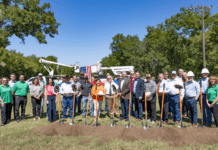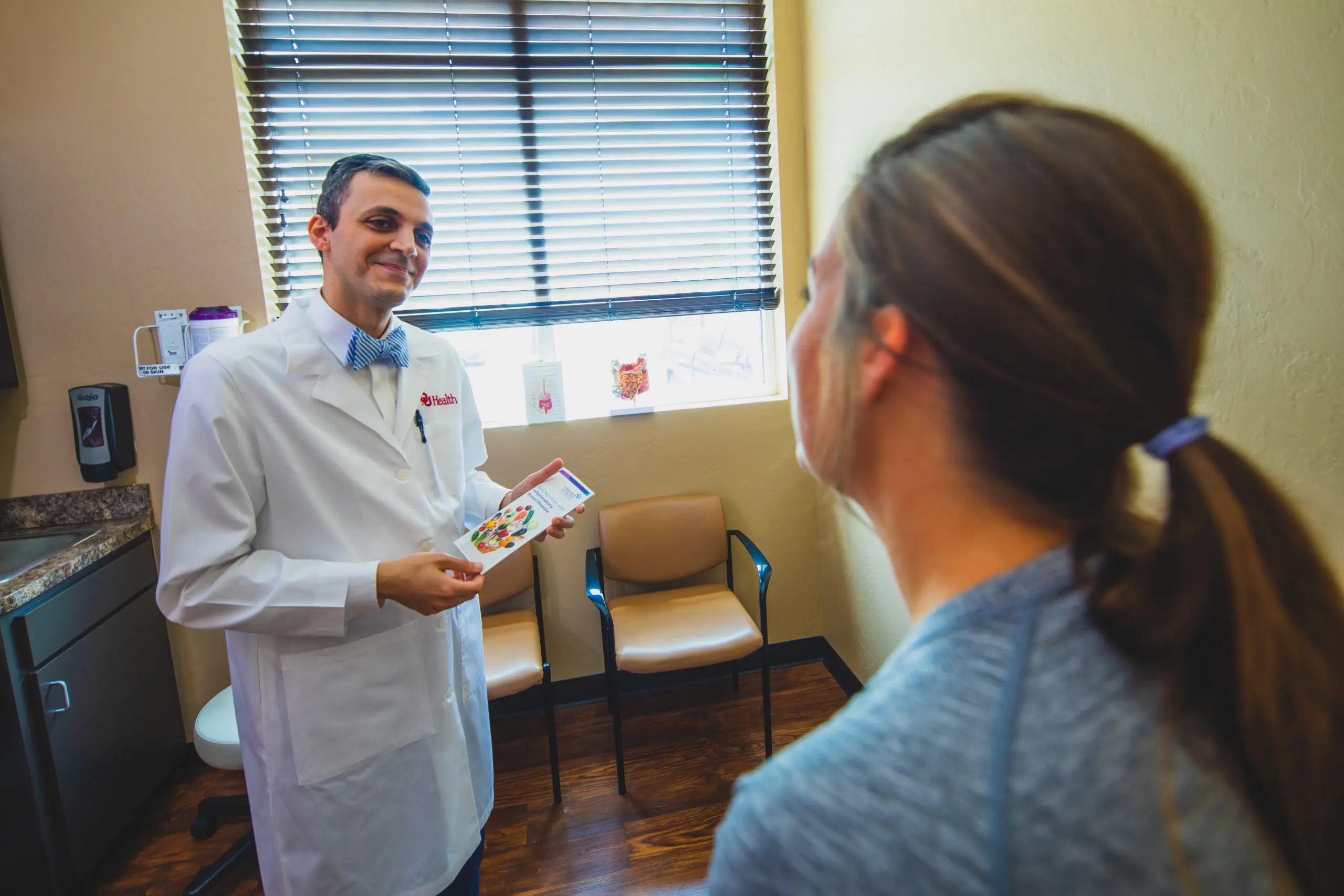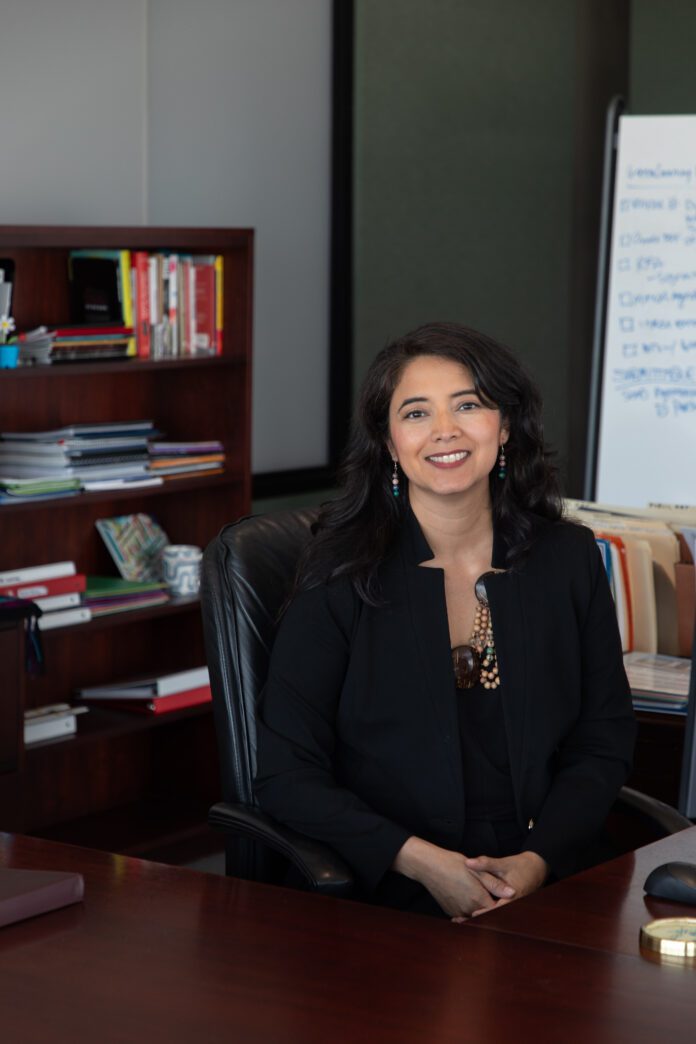Krystal Reyes, Tulsa’s Deputy Mayor, oversees education, youth and resilience initiatives, and also helped establish the City’s first Office of Children, Youth and Families. Reyes was formerly Tulsa’s Chief Resilience Officer, where she led major equity and community initiatives, including the Resilient Tulsa Strategy and the City’s Financial Empowerment Center. A longtime public servant with city leadership and nonprofit experience in New York City and Tulsa, Reyes has also made history as the City’s first Latina Deputy Mayor. We caught up with Reyes and got her thoughts on …
… what drew her away from New York to Tulsa.
It is an interesting story that intertwines both my personal and professional interests — but bottom line is that Tulsa was on my radar because of Bob Dylan. I have been a fan of Dylan’s music since I was about 13 years old, and several years ago I was following the news that Tulsa had acquired his archives. I reached out to a former colleague who I worked with in city government in New York who had moved to Tulsa a couple years prior, and she shared that I really should check out Tulsa. I found myself visiting Tulsa for a day. In that short trip I met some amazing people working in city government and the nonprofit sector doing great work and I thought to myself, “Something interesting is happening in Tulsa.” A few months later, former Mayor G.T. Bynum reached out to me, letting me know he was looking for a new Chief Resilience Officer (CRO) to lead his office’s Resilient Tulsa Strategy and the City’s racial equity and resilience work.
Everything in that strategy touched on something I had done in my career in city government and in the nonprofit sector in New York. I had an interview, another visit to Tulsa, and within a few months of that email from the Mayor, I had moved to Tulsa.
… the new Office of Children, Youth, and Families.
Mayor Nichols campaigned on several priorities – one of which was improving student outcomes. To advance this priority, he called for the creation of an office that would oversee a citywide strategy to coordinate resources and recommend policies and programs to improve outcomes along the ‘cradle to career’ continuum for children and youth in Tulsa. We also have launched a policy and decision-making body, called the Tulsa Children’s Cabinet.
For the first time, the City is bringing together the leaders of institutions and systems that impact the conditions in which Tulsa youth are living and learning, to work together to achieve a goal of putting an additional 15,000 youth on a path to economic mobility. That goal means that children starting from birth until they launch their careers, are healthy, meeting educational milestones, accessing and participating in opportunities that will help them in the future, and navigating the transition to adulthood via higher education or career training, and ultimately obtaining a great job.
The first year of this initiative will involve forming the children’s cabinet and creating the civic infrastructure of the office. We hope to implement small-scale pilot interventions and policies that data show will improve outcomes across housing, attendance and educational milestones.
… her historic appointment and how it will impact the next generation of Latino leaders.
Latinos are still underrepresented in city government, in commissions and other key sectors. And this is true at all levels of government, from state legislatures, county governments all the way up to Congress and the White House. That isn’t something that can be fixed overnight, but I feel it is up to me and those in positions of leadership to help others see themselves in positions like this. I know how important representation is, because I didn’t see anyone who looked like me in positions of power growing up. It never crossed my mind that I could be a leader in city government. But it was through leadership programs in college and subsequent internship and mentorship programs that I was able to connect with other Latinos in public service doing public service work across the country.
Those opportunities helped me have the confidence to keep going and see myself working in government or leading an organization. It is my hope that more under-represented communities see themselves having successful careers in government.
… prioritizing mental health.
We are moving mental health work to the newly created office of community health and well-being led by our Chief Health Officer Dr. Jabraan Pasha. I am grateful that Mayor Nichols sees this work as an important part of the city’s efforts to impact social outcomes. When I was CRO and we first started the commission on youth mental health, some folks in city government didn’t think we had a role to play in this space as we didn’t fund programs and we didn’t have regulatory authority over mental health. Others I talked to thought the City shouldn’t even have a commission. But ultimately, that commission showed that there is an interest, desire and place for this work and cities can be leaders of it.
A few years later, with support of one of the member organizations of the commission, the City was able to secure a federal grant to improve children’s mental health. In addition, due to the great work and recommendation from the Housing, Homelessness, and Mental Health taskforce, the City put in its budget funding to hire the first City employee dedicated to mental heath. All of those were steps that helped pave the way for more collaboration and strategic alignment to yield improved outcomes for some of our most vulnerable residents.
… applying an equity lens to city services.
I had experience implementing racial equity practices in government in New York City, and was able to apply a similar approach in Tulsa. First, talking about these issues and normalizing them is key. Through community dialogues and community engagement, we helped Tulsans understand the definition of resilience and equity and embedded it through our work. It is also important to organize or bring people and organizations together to be involved in this work. This can look like advisory boards, planning groups, community engagement events, engaging commissions, etc. Another key approach is institutionalizing the work by creating systems and policies that are based on data and best practices to keep the work moving and embedded for the long term.






















